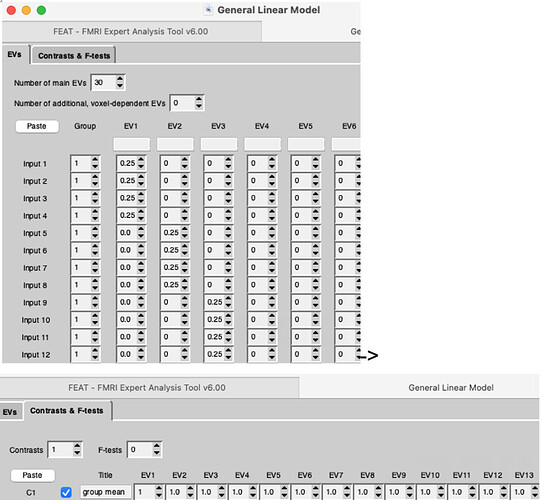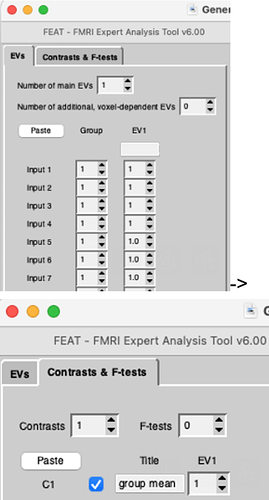Hi all,
I’m working with an fMRI dataset where each subject has up to four sessions, and each session includes two runs. After combining runs within each session, I’m trying to decide how best to model the sessions at the group level using FSL.
I’ve tried two approaches:
Method A – One-step mixed-effects
I include all session-level cope maps from each subject directly in the group-level FEAT (FLAME). That is, every session from each subject is entered as a separate data point in the mixed-effects model.
*(See first screenshot below. Screenshot 1: Group-level result using Method A (all sessions in mixed-effects)
Method B – Two-step: fixed-effects + mixed-effects
I first compute a fixed-effects average of the four sessions for each subject (ignoring session-level variance), and then use those subject-level copes in a group-level mixed-effects analysis.
*(See second screenshot below. Screenshot 2: Group-level result using Method B (fixed-effects per subject → mixed-effects across subjects)
Observation
The results from these two methods differ quite a bit, even though the design and contrasts are otherwise identical. I’m wondering if this is due to how session-level variance is (or is not) accounted for in each method.
My Questions
- Which approach is more appropriate when each subject has only four sessions?
- Does Method A violate any assumptions in FLAME (e.g., independence of data points)?
- Is Method B preferable because it avoids inflating degrees of freedom by treating repeated measures as independent?
- Are there best practices or references on when to use each strategy?
Thanks a lot!



